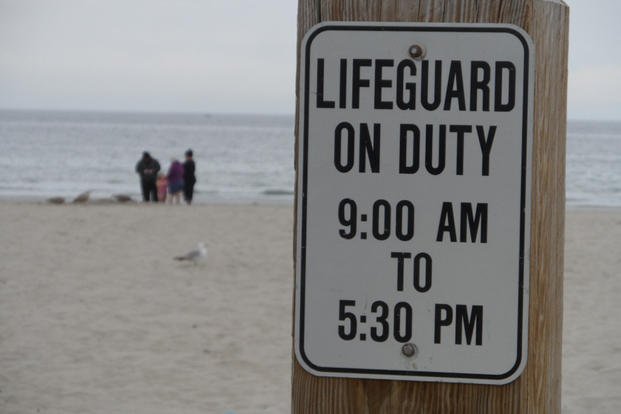After a career in the military before retiring in your early 40s, you may feel like you have service left in you. Many retired military veterans move forward into police and fire departments and proudly serve their communities after 20+ years of federal service. Here is an example of an Air Force firefighter who now wants to reside in Southern California and put his skills to further use on the beaches of San Diego or in Los Angeles County:
Sir, thank you for taking the time to read my email! I'm an Air Force firefighter veteran. I want to become an ocean lifeguard in Southern California, a highly competitive job. I'm also applying to multiple fire departments. I am 43 and have 20 years of experience in fire/EMT service. Here is what I need to do:
The Lake Lifeguard requirements are 1000m under 18 minutes. The Ocean Lifeguard test is faster to be a competitive candidate, along with other tests like the run-swim-run. How would you recommend preparing for this test, a long tryout day of calisthenics, teamwork activity, load bearing (stretcher carry/body drags) and ocean/lake rescue? Thanks, Andrew.
Andrew, thanks for your service and desire to continue to serve your community in an area that will profoundly impact the people you will help. My initial advice is to learn more about the test and selection challenges with the SoCal Ocean Lifeguards (L.A. County/San Diego County). Being as specific as possible to their testing and training is critical to how you prepare for the near future.
Secondly, get on a program that focuses primarily on calisthenics and cardio and does not neglect flexibility and mobility. Your physical and medical checks will be thorough and test your endurance (run and swim) and muscle stamina through calisthenics (pull-ups, push-ups, sit-ups), flexibility and mobility. Regardless of your fitness level, the Calisthenics and Cardio program is perfect, as it is a beginner, intermediate and advanced program that progresses with running, swimming, calisthenics and load-bearing activity to help you prepare well for these tests.
Here are some classic swimming, running and calisthenics workouts to help you with the type of workouts you can do to prepare better, but as an older athlete, do not skip mobility day! Never skip mobility day, because that is part of the weekly programming that will help your "experienced" body handle the volume of repetitions and miles to improve your muscle stamina and endurance.
- Swimming Workout Ideas
- The Calisthenics/Running Pyramid
- More Fantastic Ways to Build Muscle Stamina/Endurance -- Pyramid Style
- And Don't Skip Mobility Day
Lastly, ensure you are not just meeting the standards, but exceeding them because this level of ocean lifeguard is high. We had several in my Basic Underwater Demolition/SEAL, or BUD/S, class, and they were top-notch swimmers, runners and ideal teammates when dealing with traveling in the surf zone. There is no reason why you cannot compete with other candidates half your age, but it will take consistent training and preparation on your part.
Stew Smith is a former Navy SEAL and fitness author certified as a Strength and Conditioning Specialist (CSCS) with the National Strength and Conditioning Association. Visit his Fitness eBook store if you're looking to start a workout program to create a healthy lifestyle. Send your fitness questions to stew@stewsmith.com.
Want to Learn More About Military Life?
Whether you're thinking of joining the military, looking for fitness and basic training tips, or keeping up with military life and benefits, Military.com has you covered. Subscribe to Military.com to have military news, updates and resources delivered directly to your inbox.






















